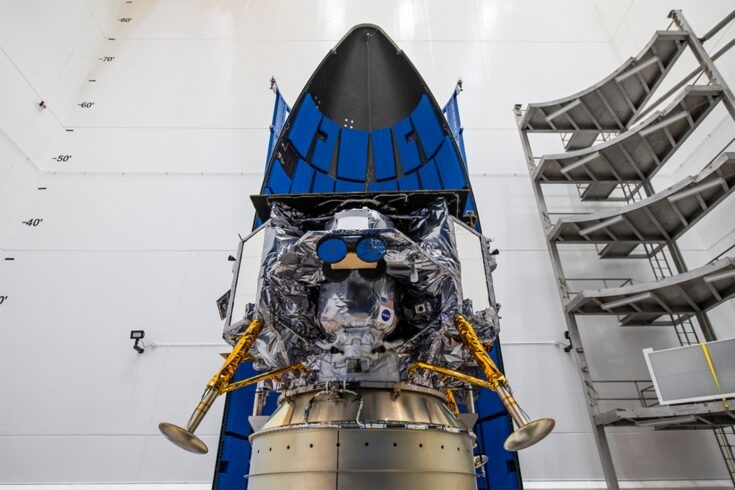
Harwell’s RAL Space involved in world first private lunar landing mission
In a significant step forward in lunar exploration, an instrument designed to observe the Moon’s atmosphere was successfully launched on 8 January 2024.
The instrument, called the Peregrine Ion Trap Mass Spectrometer (PITMS), was launched from Cape Canaveral, Florida and is a part of Peregrine Mission One. It is the first moon landing mission since Apollo 17 was launched by the US in December 1972.
It was developed in collaboration with the Science and Technology Facilities Council (STFC) RAL Space, The Open University (OU) and NASA’s Goddard Space Flight Center (NASA GSFC), funded through UK Space Agency and European Space Agency.
The instrument aims to determine the composition of trace gases in the Moon’s atmosphere (exosphere), as well as look for water and other volatile compounds that could prove vital for establishing crewed bases on the Moon.
Understanding lunar conditions
PITMS will operate for half a lunar rotation, about 14 days on Earth, and conduct measurements under various temperature conditions to capture the impact of the lunar lander’s exhaust and of rovers disturbing soil throughout the mission.
These measurements will be crucial in understanding how the Moon volatiles respond to disturbances like rocket exhausts. Additionally, they will provide insight into lunar resources such as water, which is essential for sustainable human space exploration.
Instrument development leadership
RAL Space, as part of a team led by the OU, was responsible for the overall mechanical, thermal, software, and electronic design of the Exospheric Mass Spectrometer, a key element of the PITMS instrument.
The RAL Space team was also responsible for testing the PITMS instrument to ensure it would survive the journey to the Moon and work on the lunar surface, before shipping it back to NASA in 2021.
Long lasting legacy
Commenting on RAL Space’s contribution, Professor Mark Thomson, Executive Chair of STFC, says:
The next step in human exploration of the Solar System may utilise the Moon as a stepping stone to make that journey feasible. STFC’s RAL Space team of engineers and scientists have already been involved in over 200 space missions and this latest work that supports the PITMS mission to the Moon will give us an opportunity to better understand the sources of water on the Moon.
This is important in the understanding of the potential to harvest lunar water as a resource to support both future human exploration mission and the establishment of a long-term lunar base.
Christopher Howe, Production and Software Group Leader at RAL Space, said:
The use of the Moon’s water could prove vital for future human endeavours in space, so we’re incredibly proud to have had the opportunity to help develop PITMS and are delighted to see it safely on its way. The technology from PITMS will now help underpin instruments on future missions, such as the Rosalind Frankling Rover, so whilst PITMS will only operate for one lunar day on the moon, its legacy will be felt for years.
Worldwide collaboration and expertise
PITMS is a NASA-Provided Payload, (principal pnvestigator: Dr Barbara Cohen, NASA GSFC). The delivery of the instrument, by Astrobotic Technology through NASA’s Commercial Lunar Payload Services initiative, is an important milestone. It will enable NASA’s Artemis programme to deliver its ambitious programme of science and exploration, to send humans to the Moon and then to Mars.